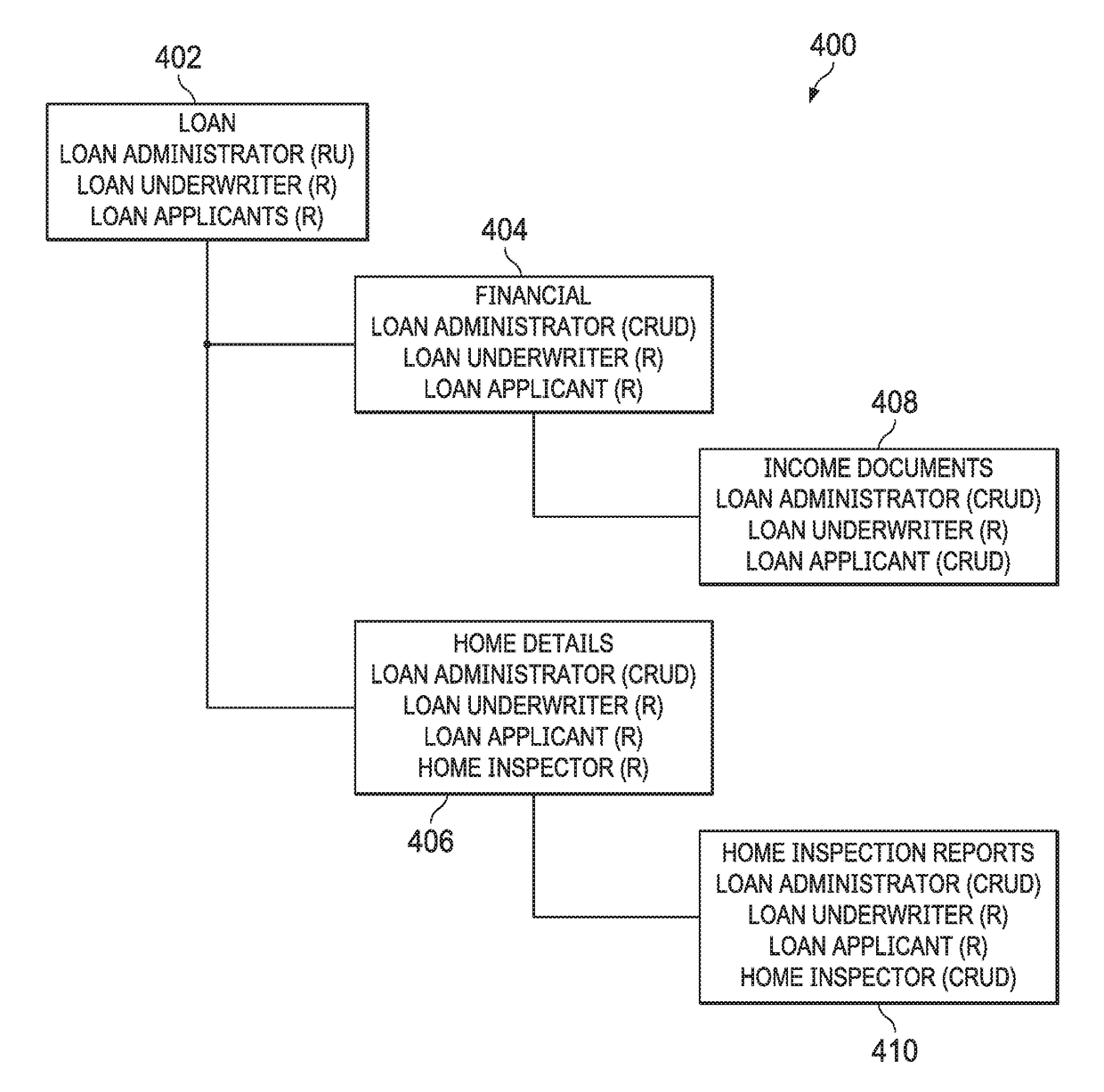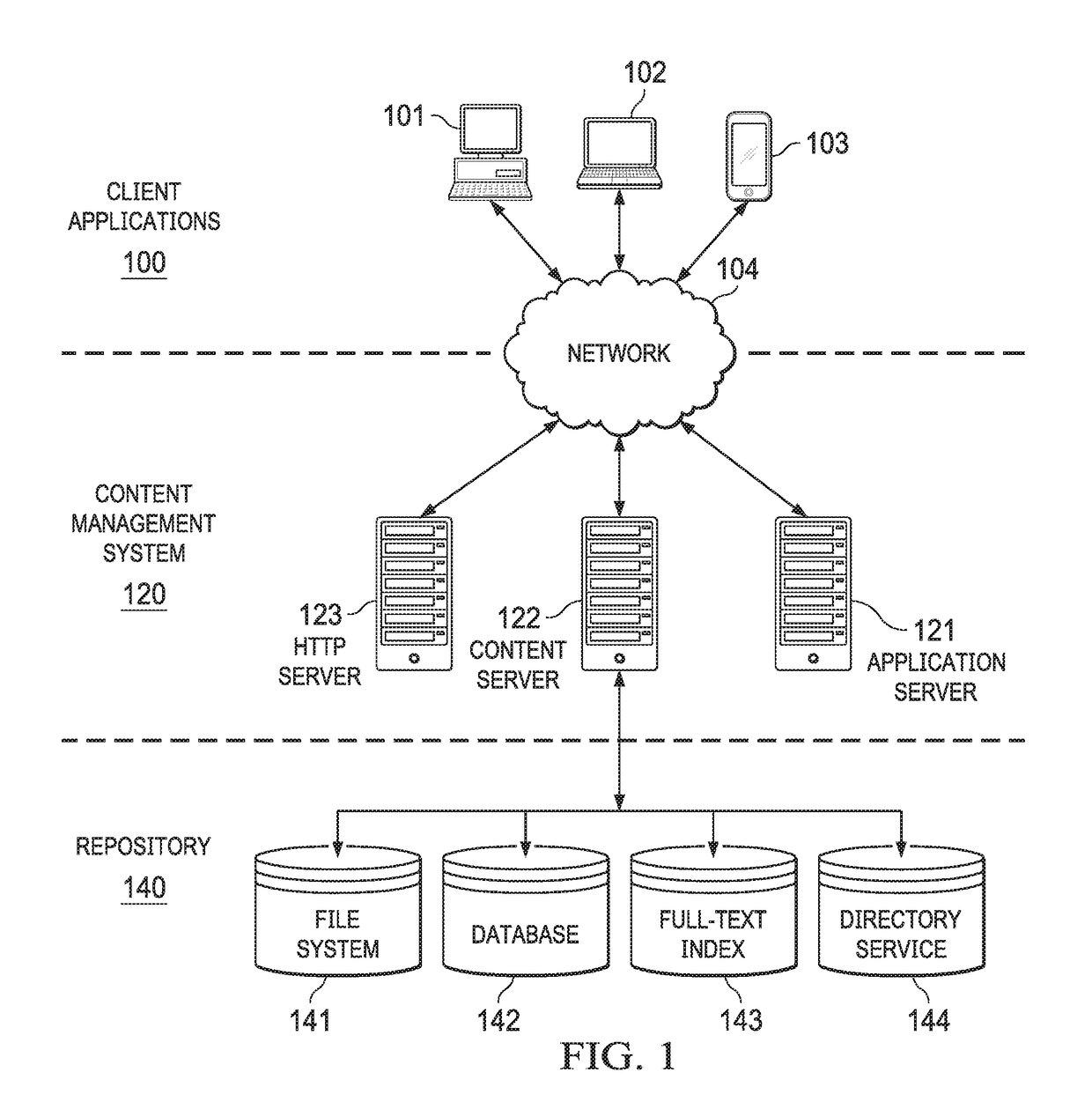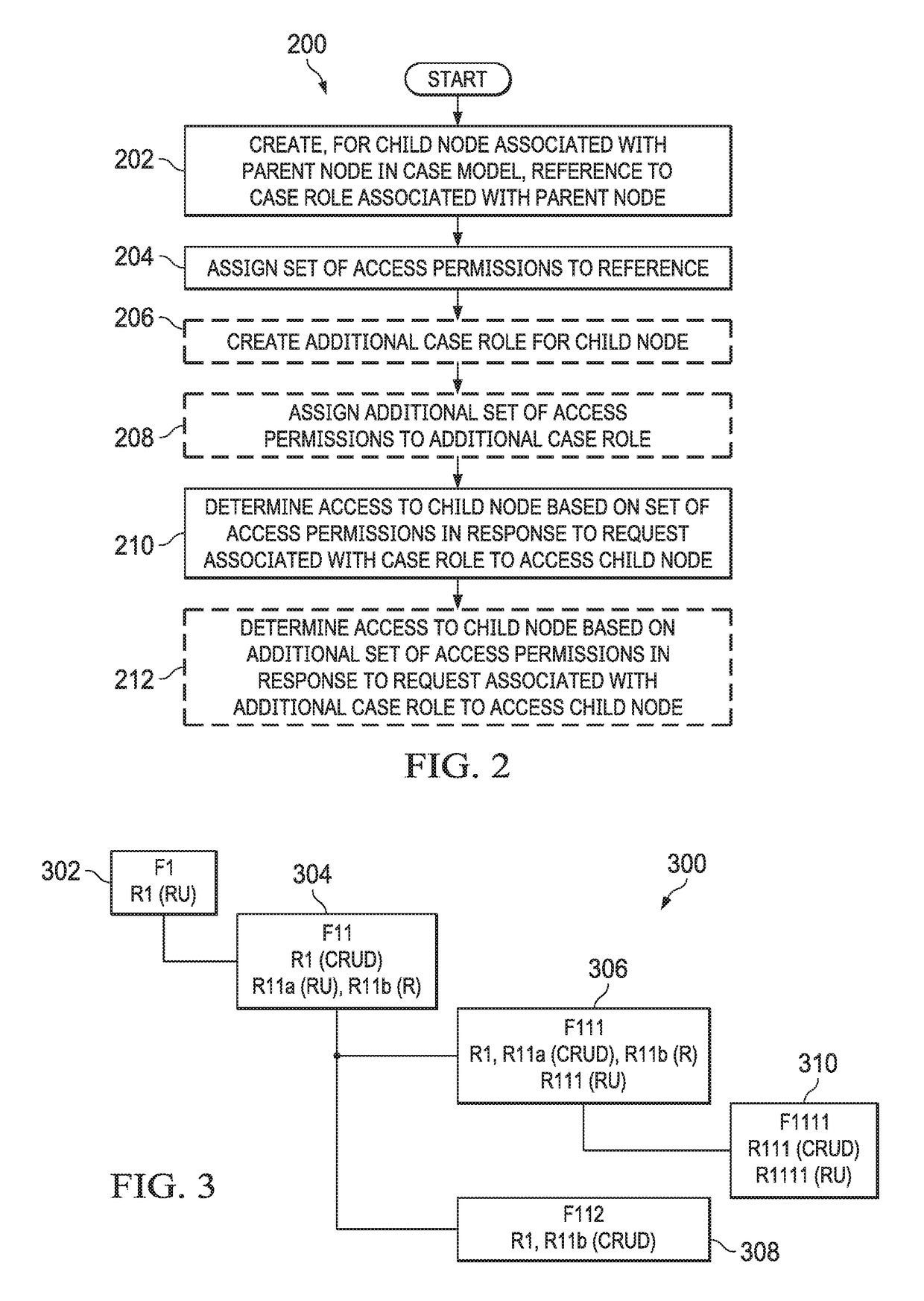Hierarchical case model access roles and permissions
a hierarchy case model and access role technology, applied in the field of hierarchy case model access role and permission, can solve the problems of increasing the complexity of customer and regulatory data requirements, the exposure of available data, and the challenge of information management organizations
- Summary
- Abstract
- Description
- Claims
- Application Information
AI Technical Summary
Benefits of technology
Problems solved by technology
Method used
Image
Examples
Embodiment Construction
[0009]Most case management solutions are custom-built solutions that rely on the data and its relationships to write stateless processes or build custom code to describe the case model. However, case management solutions typically cannot create hierarchical case models or assign the complex hierarchical case model access roles and permissions required for case models based on case roles. Case management solutions use custom code or custom build processes without a case model instead of using hierarchical case models. Thus, it would be desirable to have generic processes for creating hierarchical case models and assigning complex hierarchical case model access roles and permissions that avoid any need for customized code solutions.
[0010]Embodiments herein provide hierarchical case model access roles and permissions. A hierarchical case model specifies a folder / container structure for a particular case. For example, in a loan case model, the system can model one folder for “income doc...
PUM
 Login to View More
Login to View More Abstract
Description
Claims
Application Information
 Login to View More
Login to View More - R&D
- Intellectual Property
- Life Sciences
- Materials
- Tech Scout
- Unparalleled Data Quality
- Higher Quality Content
- 60% Fewer Hallucinations
Browse by: Latest US Patents, China's latest patents, Technical Efficacy Thesaurus, Application Domain, Technology Topic, Popular Technical Reports.
© 2025 PatSnap. All rights reserved.Legal|Privacy policy|Modern Slavery Act Transparency Statement|Sitemap|About US| Contact US: help@patsnap.com



